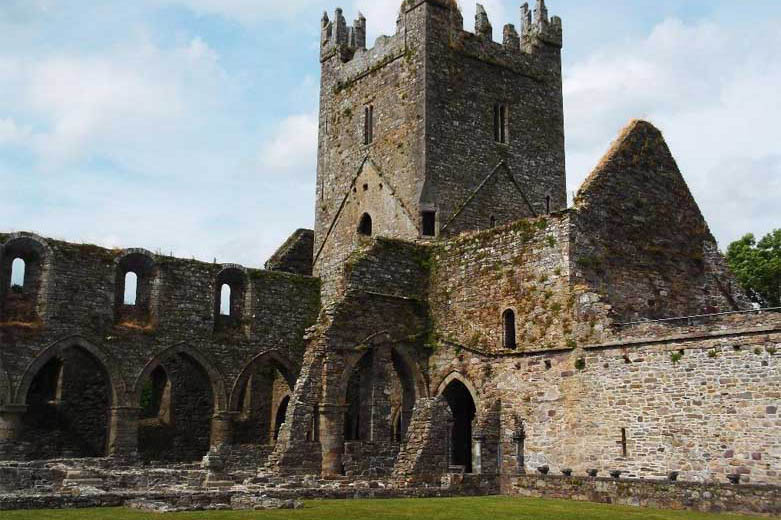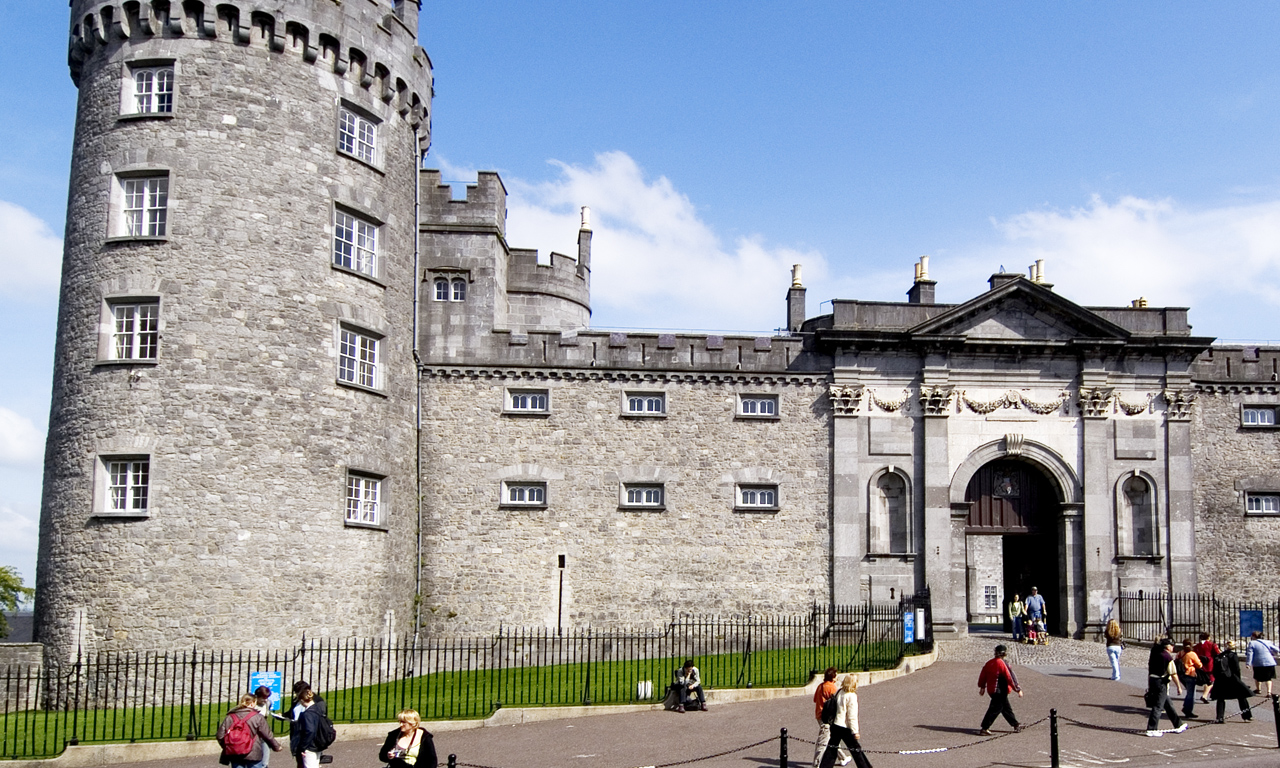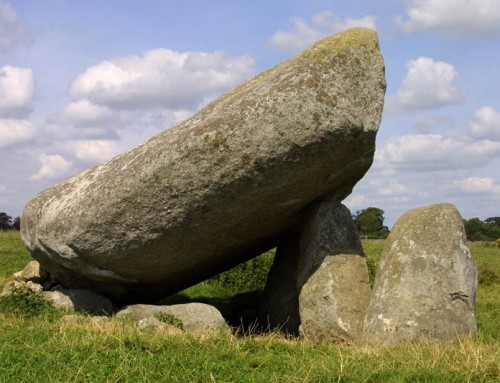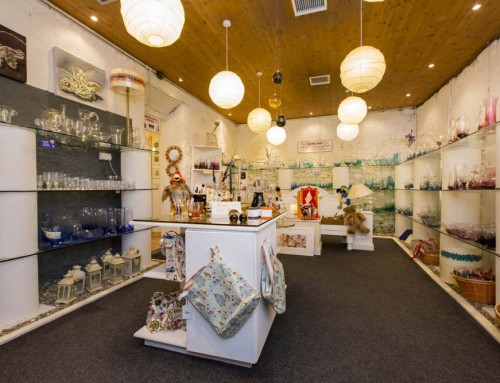Medieval Kilkenny : Castles, Cathedrals & Abbeys
Kilkenny, in Irish Cill Chainnigh or the church of St. Canice, was the ancient capital of the Kings of Ossory and many traces of its ancient and medieval past remain visible today. A fortress may have been constructed here as early as 1172 by Strongbow and the town is also known as the “Marble City” thanks to the limestone that has long been quarried in the region. Kilkenny is situated on the River Nore which provides the visitor with many pleasant riverside walks.
Kilkenny Castle
April & May, daily from 10.30am to 5.00pm
June to August, daily from 9.30am to 7.00pm
October to March, daily 10.30am to 12.45pm and 2pm to 5pm
Please note that visitors may have to queue for some time during the summer months.
A 12th century castle remodelled in Victorian times and set in extensive parklands which was the principal seat of the Butler Family, Marquesses and Dukes of Ormonde. The Castle was occupied from the 13th to the 20th century, with the Butler Family in residence from 1391 until 1935. The 19th century Picture Gallery is 45 metres long and contains many Butler portraits as well as some fine tapestries, while the other rooms display the authentic fabrics that existed in the house in the 18th and 19th centuries. The central block now includes a library, drawing room and bedrooms decorated in 1830’s splendour. A suite of former servants rooms is now the Butler Art Gallery, which mounts frequently changing exhibitions of contemporary art.
Kilkenny Castle, The Parade, Kilkenny City, County Kilkenny.
tel: +353 (0)56 7721450
fax: +353 (0)56 7763488
web: www.heritageireland.ie
St. Canice’s Cathedral
Easter to Oct, Mon – Sat.
10.00am to 1.00pm,
2.00pm to 5.00pm,
Sun 2.00pm to 5.00 pm.
Saint Canice’s Cathedral (Anglican), the second longest of Ireland’s medieval cathedrals, provides a seminal influence on Kilkenny life. Built on the site of an earlier church, which in turn replaced an earlier timber structure, the major portion of the work that produced the beautiful Gothic structure was carried out by Bishop Hugh de Mapilton in the middle of the 13th Century. Except for the spire, which collapsed in 1332, the present building is largely unchanged from the 13th century. Features of the cathedral include the fine collection of 16th and 17th century tombstones; black marble monuments to lords, ladies and bishops, and to Edmund Purcell, 16th century captain of the Ormond’s notorious gallowglasses, or mercenaries; the 12th century font and St. Kieran’s chair, built into the cathedral walls and still used in the enthronement of the bishops of Ossory; the Bishop’s Palace and library, founded in 1679 and containing 3000 works from the 15th, 16th and 17th centuries, as well as the Red Book of Ossory, a 15th century manuscript which chronicles the lives of early saints. Outside, the 9th century round tower, once used by the monks for refuge, may be climbed (weather permitting)
St. Canice’s Cathedral, Irishtown, Kilkenny City, County Kilkenny.
tel: +353 (0)56 7764971
fax: +353 (0)56 7723646
Kells Priory
All year round; tours by arrangement.
Although there is evidence that there were priests already on site serving the nearby medieval parish church, Geoffrey FitzRobert de Marisco brought four Augustinian Canons from Cornwall to establish Kells Priory in 1193. It suffered many vicissitudes in a turbulent period, when it was sacked twice, once in 1252 and again in 1327.
After the dissolution of the monasteries by Henry VIII in 1540-41, the priory, together with a substantial proportion of its lands, was granted to James, Earl of Ormond, but continued to elect priors well into the following century. In the time of Cromwell, the strength of the barony was further dissipated and the once thriving medieval settlement that had built up around the foundation went into permanent decline. The existing extensive ruin mostly dates from the 14th and 15th centuries. It consists of a church, a chapel, prior’s residence or sacristy, and a number of domestic buildings, all standing on an enclosed site of some 4 acres.
Kells Priory, Kells, County Kilkenny.
tel: +353 (0)56 7728255
Jerpoint Abbey
March to May, daily from 10am to 5pm
June to mid-September, 9.30am to 6pm
November, daily 10am to 4pm. Charge applies
An outstanding Cistercian abbey, a mile to the south-west of Thomastown, founded in the latter half of the 12th century by Donal MacGillapatrick, King of Ossory. The abbey was occupied some 30 years later by the Cistercians from Baltinglass, Co. Wicklow. The remarkable 12th century foundation is very impressive, even as a ruin, with a beautifully carved 15th century sculptured cloister arcade.
Jerpoint Abbey, Thomastown, County Kilkenny.
tel: +353 (0)56 7724623
fax: +353 (0)56 7754003
web: www.heritageireland.ie
Duiske Abbey
All year round, Monday to Friday, 10.00 am-5.00 pm; closed weekends
Duiske Abbey, now the Catholic parish church, but once the church of a 13th century Cistercian monastery, founded in 1204, the remains of which have been incorporated into the building. The name derives from the Gaelic for Black Water – dubh uisce – a river that joins the Barrow a little downstream of the abbey. Duiske Abbey, the largest of Irish Cistercian monastery churches and whose buildings encompassed much of the town, began to fall apart in 1536 when it was suppressed. Although the monks continued to occupy it for many years, it gradually fell into ruin. The last tragedy was in 1744, when the tower collapsed into the nave. However, the debris from the tower was smoothed over to create a new floor and the west end was re-roofed to make a place of worship for the Protestant Church of Ireland. In 1812 the church was returned to the Catholic community and the long work of restoration began – to be completed finally in the 1980’s.
Duiske Abbey, Graiguenamanagh, County Kilkenny
tel: +353 (0)59 9724238





